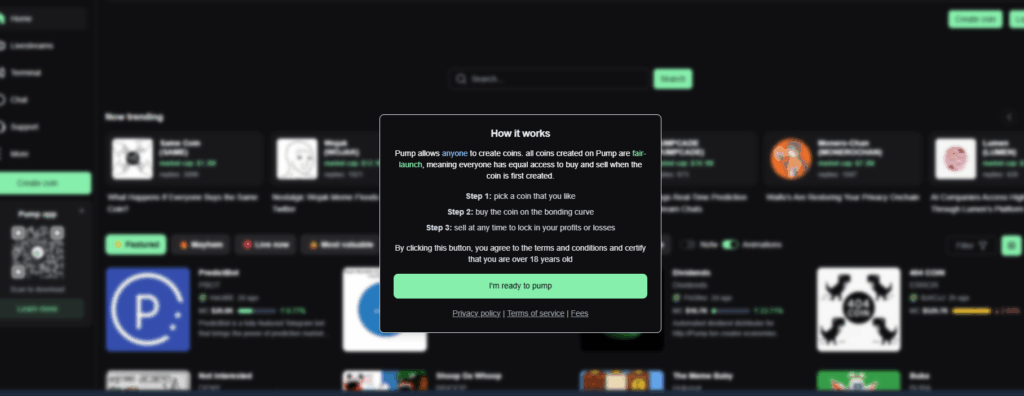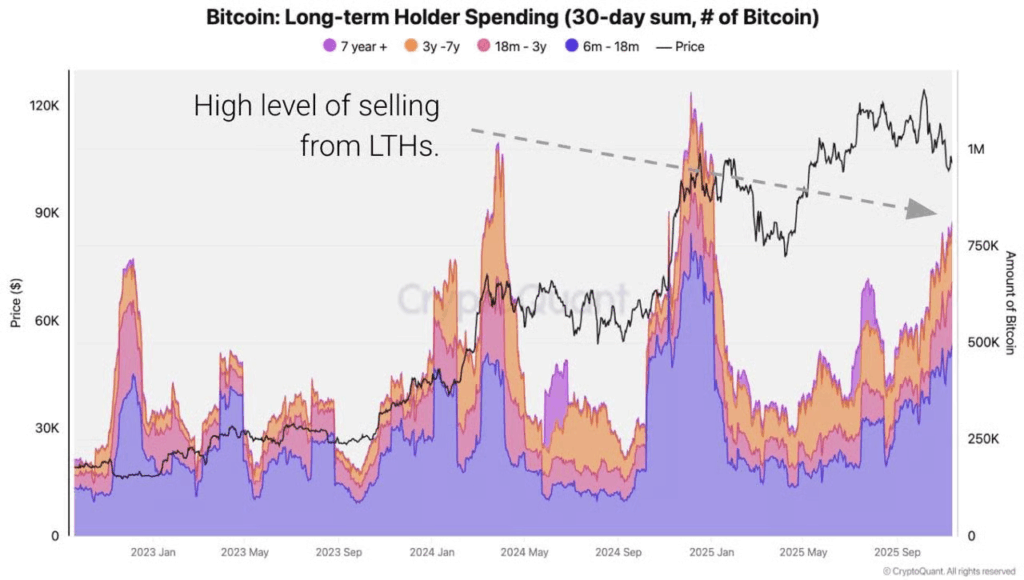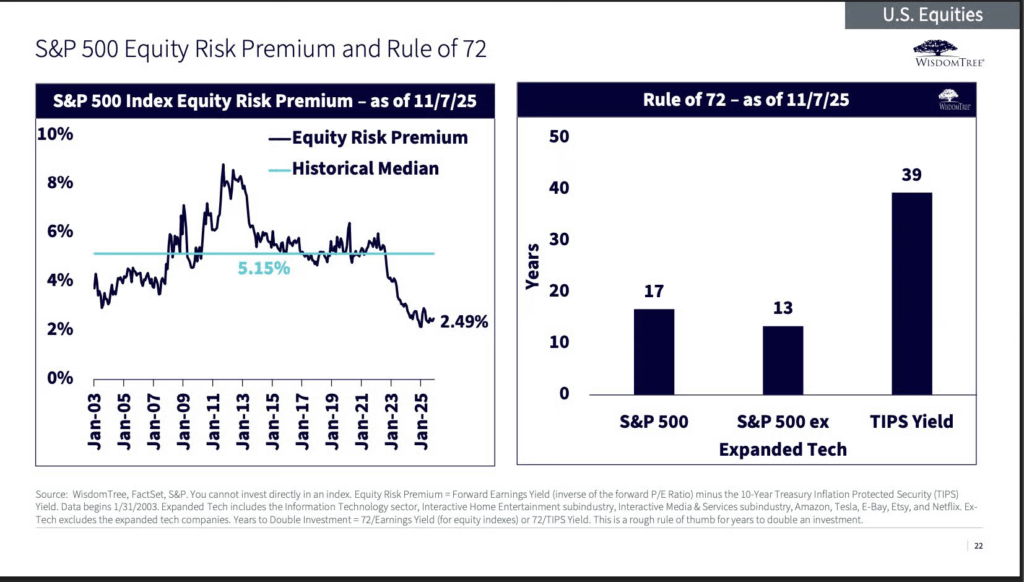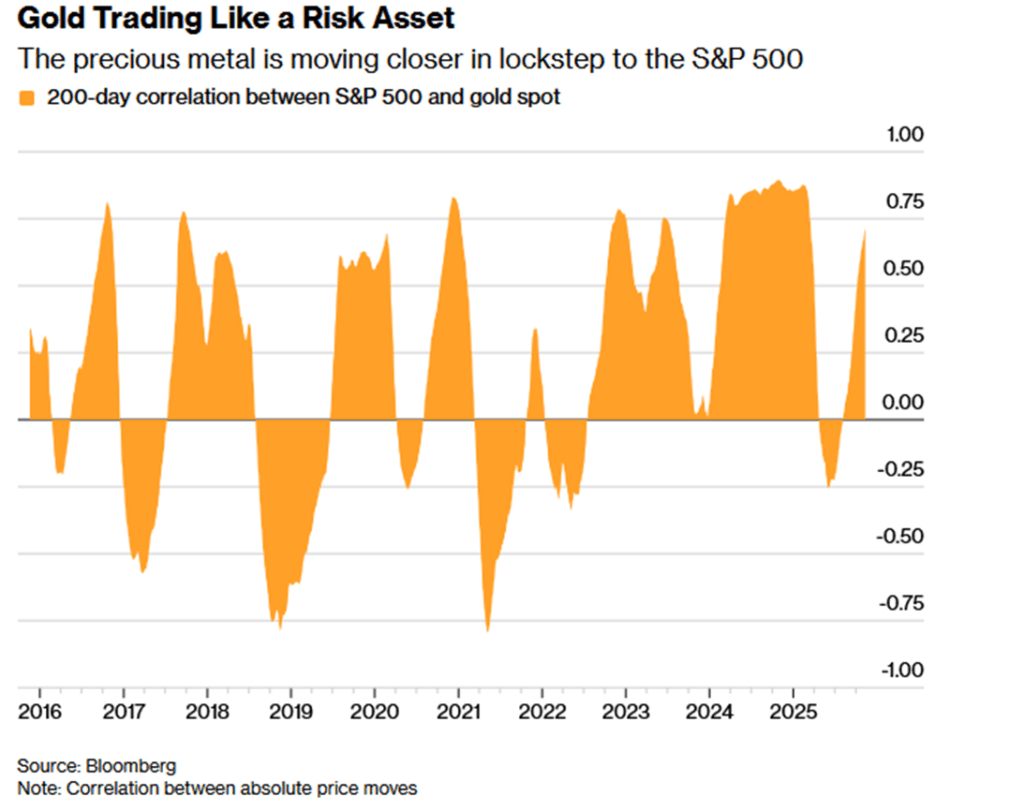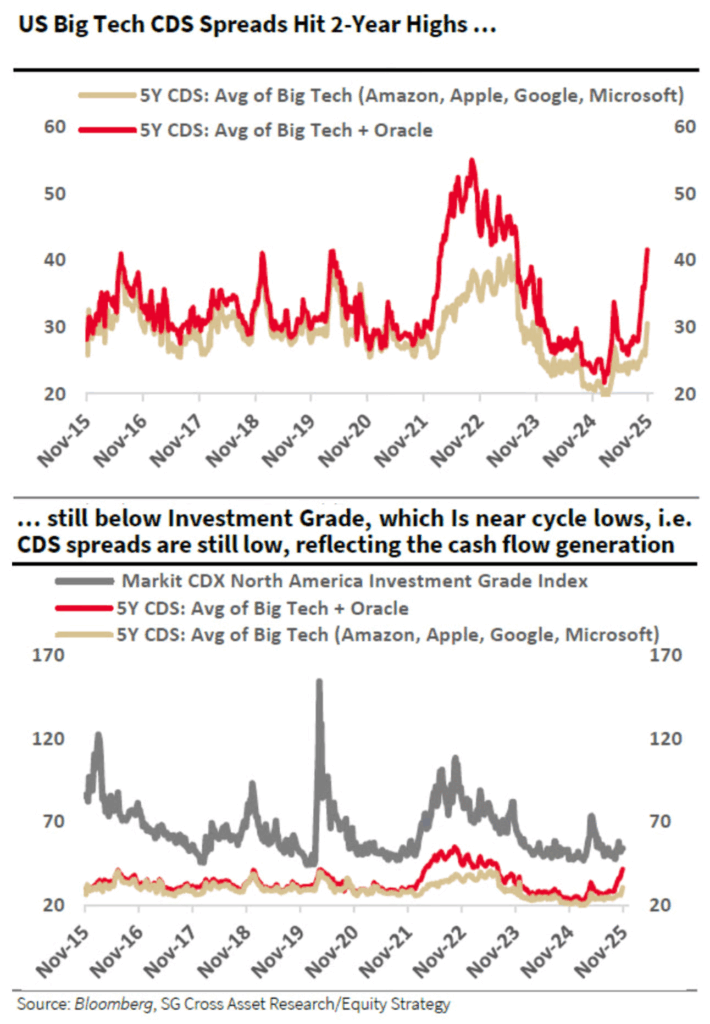1. S&P History of Closes Below 50-Day after Long Rallies
SPX vs. 50DMA. “$SPX finally closed below its 50 day moving average, after 138 days! Here’s what $SPX did next after such long rallies ended.”
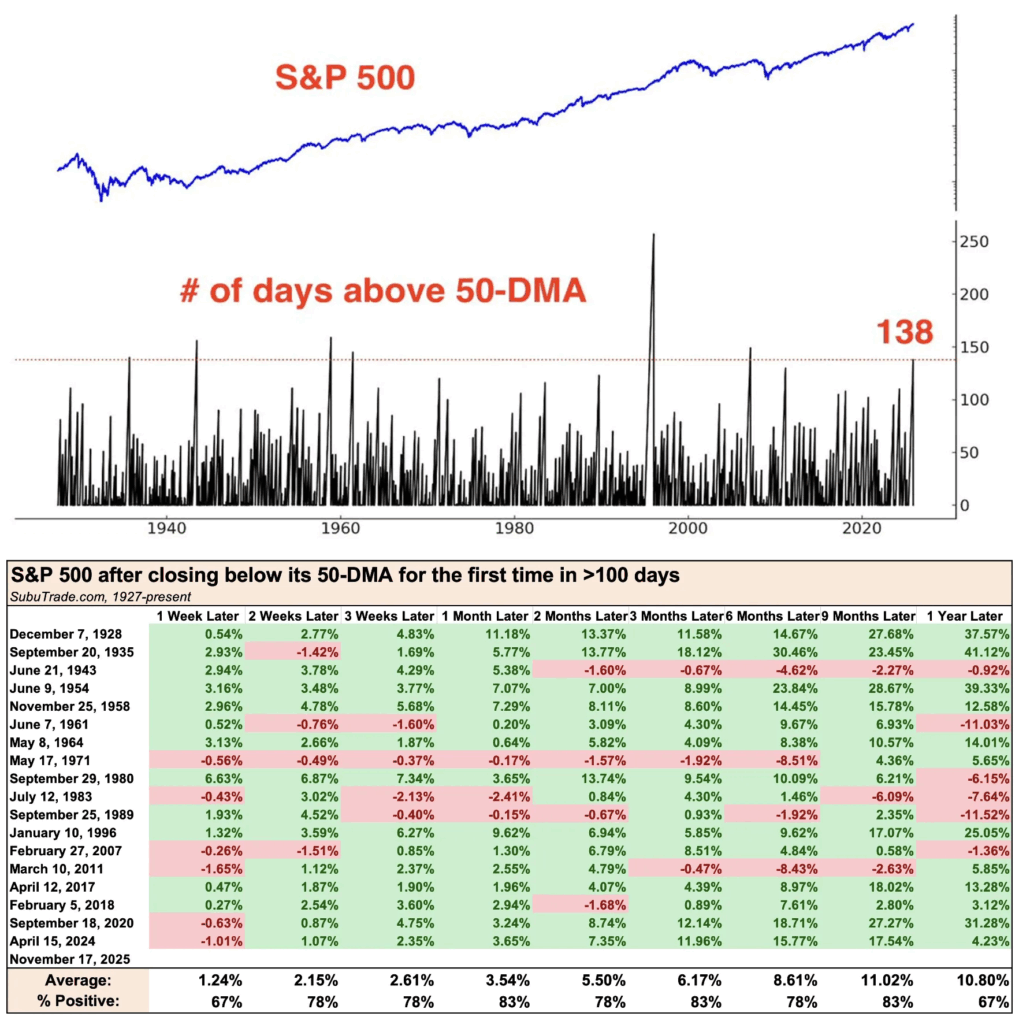
DAILY CHARTBOOK
2. Private Credit Fears Growing….Private Lender Blue Owl Stock -41% YTD…Breaks thru Liberation Day Lows

StockCharts
3. Most Bitcoin ETF Holders are Not Up Much…Average Cost Basis $89,600

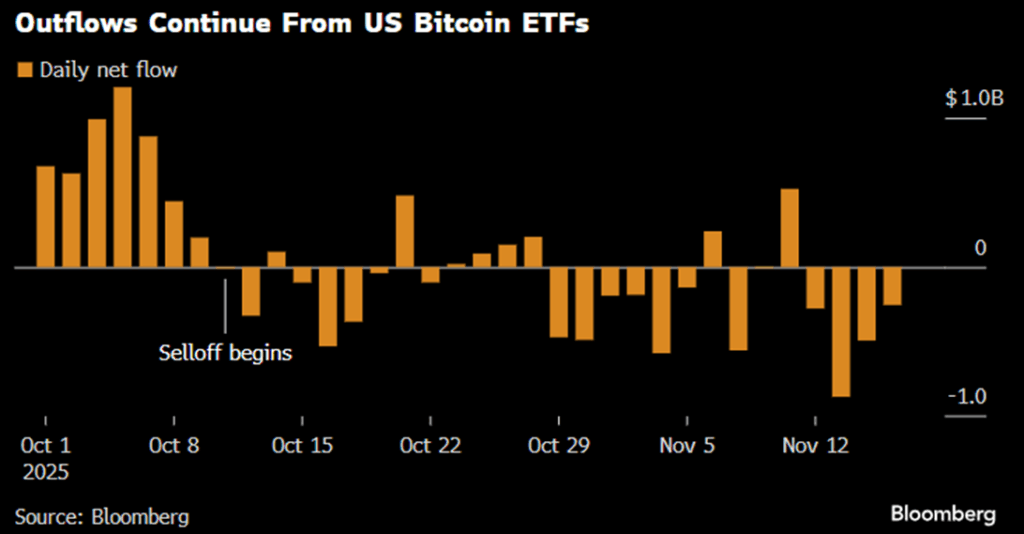
Bloomberg
4. Bitcoin History

Bespoke
5. Retail Investors are Not Buying the Dip in Bitcoin
“The one-year growth in U.S.-based ETF holdings have slowed down from 441K BTC on Oct. 10, to 271K BTC today, indicating slower demand from U.S. investors,” Julio Moreno, CryptoQuant’s head of research, told MarketWatch. “Retail investors are not buying the dip, as suggested by the average order size in the bitcoin spot market.”

MarketWatch
6. NVDA Earnings Wednesday After Close….Valued at 3x the Entire Energy Sector that We Need to Power AI

Otavio (Tavi) Costa
7. Price Disparity in Electricity China vs. U.
Prof G blog–The most important part of this story is the price disparity: Kimi K2 costs $2.50 per million output tokens — that’s 4x cheaper than GPT-5 for comparable performance. Chinese AI models from Alibaba and DeepSeek are also roughly 10x less expensive than American alternatives.
Why are Chinese AI models so cheap? Energy. China produces 2x more wind power, 3x more solar, and 6x more hydroelectric power than America. That, plus government subsidies, makes their electricity half as expensive as ours.
This administration is only making our energy problem worse. They’re actively gutting renewable projects and making the permitting process way more difficult. If you want to build more solar energy in America today, there’s a new rule where you have to get a personal sign-off from Secretary of the Interior Doug Burgum. It’s just a bureaucratic nightmare.
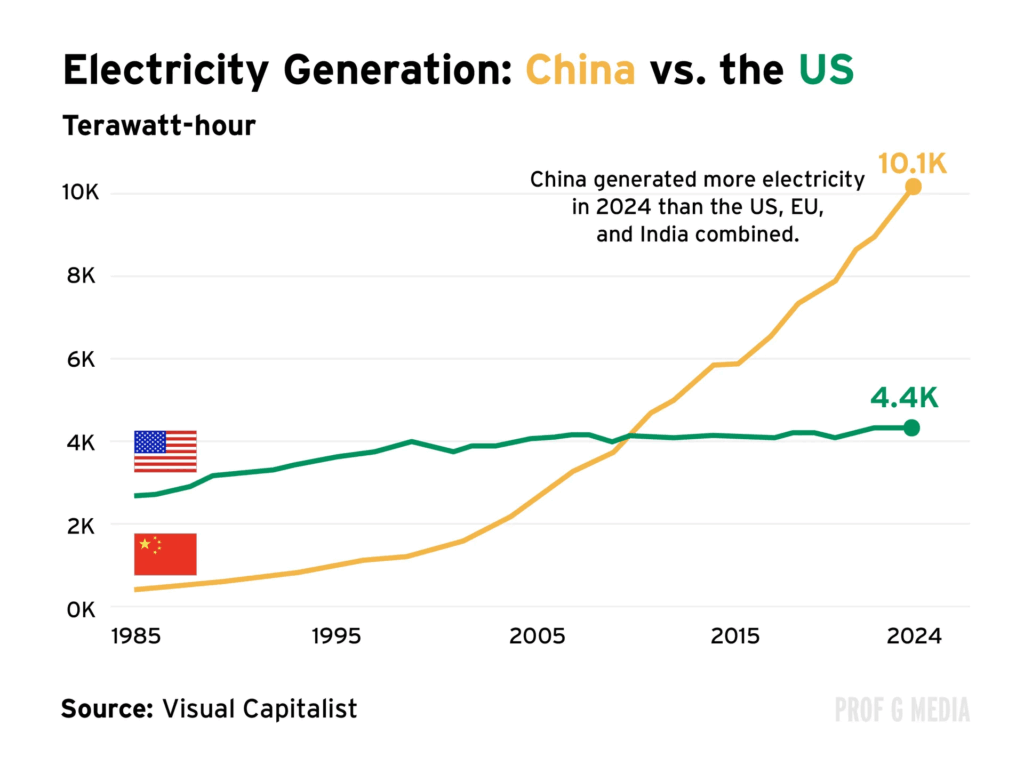
Prof G Markets
8. India Buying Record Gold ETFs

Apollo
9. Married Couple Households Plummet

chartr
10. 3 Cognitive Habits of People Who Get Things Done-INC
High-achieving workers have these things in common.
BY FAST COMPANY
Marcus leads a team of eight direct reports, and Jennifer is his star employee. While the other seven team members struggle to complete tasks on time or in the way Marcus asks for them, Jennifer seems to ace any task she’s given. She asks questions when she’s unclear and owns up to her mistakes. Any time the other employees mess up, Marcus wishes he could clone Jennifer seven times and save himself the hassle.
Sound familiar?
You may not be able to clone your star employees, but you can help your team replicate the cognitive habits of people like Jennifer to build the skill of accountability across your team. At the NeuroLeadership Institute, we’ve spent the past year reverse-engineering what accountable people do from a cognitive perspective. Quite literally, we’ve asked, what are the cognitive habits—the habits of mind—of people who do this well? Three have come into focus: syncing expectations, driving with purpose, and owning one’s impact.
In short, accountable people get clarity in what they’re supposed to do, execute tasks deliberately and intentionally, and learn from the outcomes they produce, whether good or bad.
Featured Video
Alexis Ohanian is Betting on Women’s Sports as a Billion-Dollar Opportunity
3 habits of accountability
When people attend to these habits in the course of their work, we call it proactive accountability. That is, they see accountability as a way to grow, develop, and innovate. They take ownership of their responsibilities and learn from their mistakes. Proactive accountability stands in contrast to punitive accountability, a practice in which leaders create environments of fear, blame, or punishment that hinder learning and growth, as well as permissive accountability, in which leaders assume performance issues will simply work themselves out.
Sync expectations
A major factor in cultures with low accountability is a mismatch in expectations. The manager thinks the team member will do one thing, but the team member thinks they’re supposed to do something else. Disappointment and broken trust follow.
In the brain, unmet expectations are processed as error signals. Levels of the neurotransmitter dopamine drop, sapping motivation and causing us to feel frustrated or angry, which forces us to adjust our expectations. When expectations are met, however, there is no error signal, dopamine levels hold steady, and trust and satisfaction remain strong.
The first habit of proactive accountability, Sync expectations, involves the employee getting clear about what’s expected of them. This is an important first step because shared understanding is the foundation of being effective. In the brain this is represented by a temporary synchronization of neural activity, known as neural synchrony.
During neural synchrony, neurons in both people’s brains are firing in the same patterns because their minds are processing information in nearly identical ways. For this to happen, both people need to discuss and eliminate any potential misunderstandings before moving forward.
Syncing expectations also has benefits for relationships at the end of the project because fulfilled expectations breed trust, while unmet expectations erode trust. When two teammates sync expectations up front, they make an investment in sustaining the relationship long-term.
Tactic: Encourage your team to sync expectations by communicating in a way that’s succinct, specific, and generous (SSG). SSG communication uses a narrow focus to support working memory (succinct); it uses visual, explicit language to enhance processing (specific); and it’s tailored to create ease of understanding (generous). It’s not “Get me this report by 5 p.m.”—rather, it’s “Email me this report by 5 p.m. Eastern Time, and please attach the report as a PDF.”
SSG communication creates clarity, which promotes synchrony and aligns expectations.
Drive with purpose
Once the leader and employee have synced expectations, the employee must own the responsibility to execute the task at the highest level. Highly effective people often do this by connecting the goal at hand to a higher purpose, and then working to create the right outcomes with that purpose in mind.
Purpose ignites motivation. When we know why we’re asked to do something, and we can see how the work creates a meaningful impact, we’re more intrinsically motivated to act. Compared to extrinsic motivators, such as money and status, intrinsic rewards, like a sense of accomplishment or mastery over a task, are much more powerful. Consciously or not, effective people find deeper meaning in their work to summon the energy to keep pushing.
They also act deliberately, rather than hastily, investigating as many possibilities as they can and assuming almost nothing. In addition, they check their biases to avoid making rash judgments. Since cognitive biases act as mental shortcuts, they pose risks for an employee completing a task effectively. Someone who acts with an expedience bias, for instance, might move too quickly and miss a crucial part of the work.
Tactic: Help your employees identify the impact this work will have on them. Perhaps the project is an opportunity for them to build a new skill or to contribute to an important organizational goal. Asking questions that elicit a clear “why” will help the employee form a stronger sense of purpose and ownership over their work.
Own the impact
Accountability doesn’t just involve getting things done as expected; it means seeing how those actions play out going forward. Even the best laid plans can produce unexpected results. Accountable leaders own their team’s impact, regardless of people’s positive intentions, and then they devise new plans to keep pushing toward success.
Proactive accountability requires us to maintain a growth mindset, or the belief that mistakes are chances to improve rather than signs of incompetence. When people always seem to get things done, it’s because they’re not getting mired in failure or basking in success. They may pause to experience their emotions, but ultimately they’re focused on achieving the next set of goals in front of them.
Tactic: The most important time for leaders and team members to own their impact is when things don’t go as planned. Help your team apologize well by following (and modeling) a three-step approach: taking responsibility, saying how you’ll fix things, and asking for others’ input. Choosing to learn from our mistakes preserves trust and promotes growth: two outcomes that sit at the heart of proactive accountability.
With these three habits, Marcus feels more empowered to help his team build the skill of accountability. Jennifer may have a natural talent for getting things done at a high level, but there’s no “secret” to her efficacy. When a new project comes her way, she merely goes through the prescribed steps that neuroscience shows will naturally produce accountability.
It will take time to develop the behaviors of proactive accountability and make them habits. But with the right focus, you can help everyone on your team, including yourself, become the kind of person who meets or exceeds expectations in whatever they do. What seems like magic will really just be brain science at work.
By David Rock and Chris Weller







